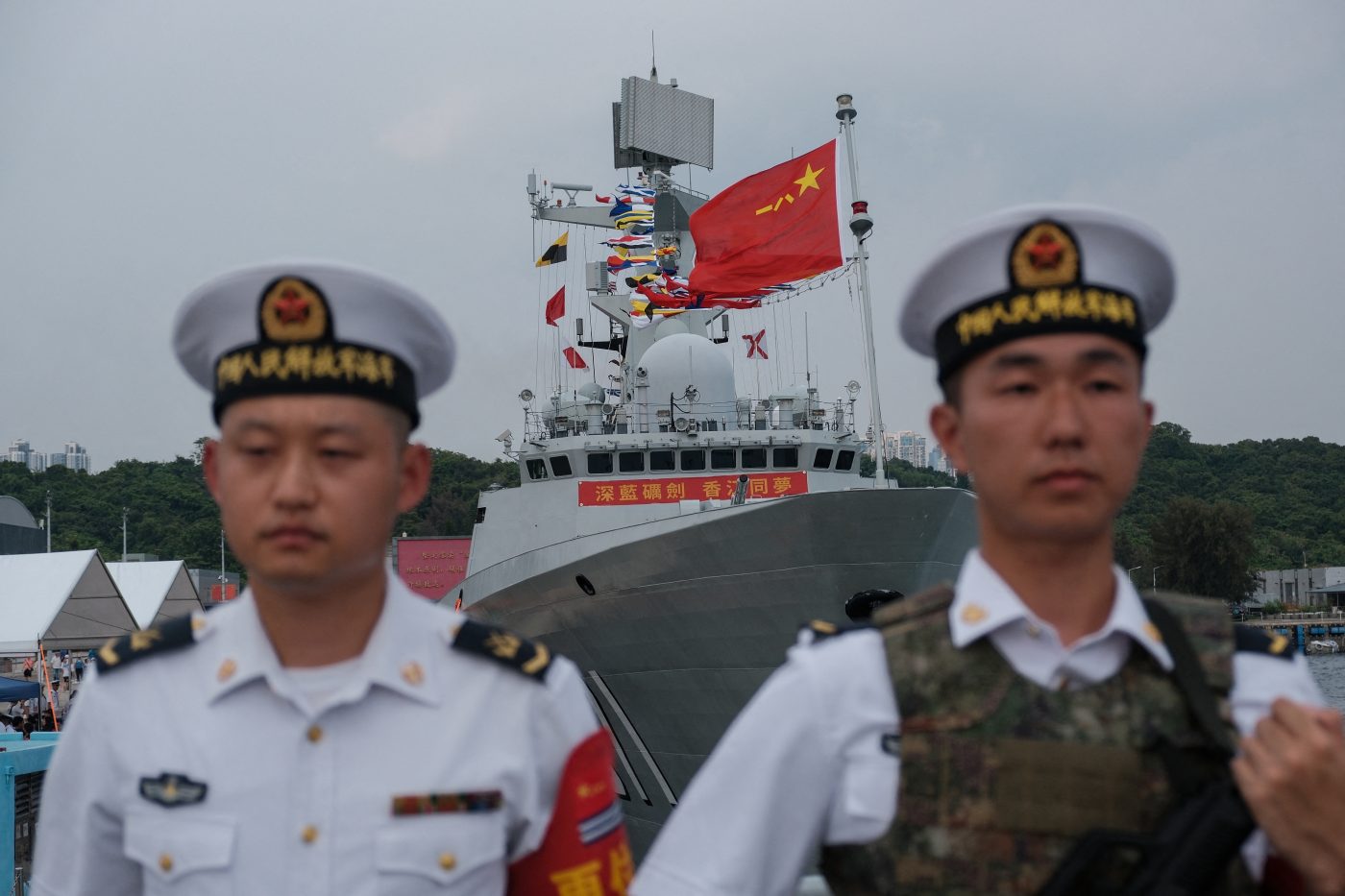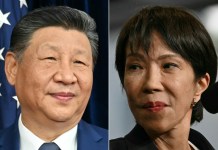The meeting between President Trump and the US military commanders indicated that the US would be more inward-looking. The proposed Trump-Xi meeting, scheduled around the APEC Summit in Korea later this month, aims for a new détente. Where does that leave the rest of the Indo-Pacific?
In June 2025, Chinese aircraft carriers entered deep into Japan’s Exclusive Economic Zone. Two months later, at Scarborough Shoal, China deployed an unprecedented mix of coast guard, naval, and maritime militia vessels to intimidate Philippine forces.
Taken together, these incidents signalled a turning point. China is no longer testing the waters: it is systematically rewriting the rules of engagement in East Asia’s seas.
These episodes are part of a broader campaign that has been intensifying over the year. Across the Taiwan Strait, the East China Sea, and the South China Sea, Beijing has expanded its “Gray-zone” operations, actions that fall short of open conflict but steadily shift the strategic balance.
By combining coercion with ambiguity, China is reshaping the region’s maritime order without firing a shot.
A Shift From Probing To Pressure
For more than a decade, Chinese patrols in contested waters were sporadic, often symbolic demonstrations of sovereignty.
That era is over. What were once occasional incursions are now daily occurrences. China’s navy, coast guard, and maritime militia operate in coordinated patterns, sustaining pressure over extended periods.
In the East China Sea, Japanese patrol vessels are routinely challenged near the Senkaku Islands. Defense officials report not only greater frequency of encounters but also increasingly aggressive manoeuvres. These activities are calibrated to probe weaknesses in the coordination between Japan’s Self-Defence Forces and its Coast Guard, revealing gaps that China can exploit.
In the South China Sea, the confrontations have grown even sharper. At Scarborough Shoal and Second Thomas Shoal, Chinese ships have escalated from verbal intimidation to water cannon attacks and ramming, causing serious damage to Philippine vessels.
Satellite images from August showed Chinese coast guard cutters being repaired after collisions—evidence that Beijing is prepared to risk escalation to assert dominance.
By concentrating overwhelming numbers of vessels at key locations, China effectively converts contested features into de facto zones of Chinese control.
Taiwan’s Constant Squeeze
Perhaps nowhere is China’s pressure more persistent than around Taiwan’s Kinmen Islands, located just off the Chinese coast.
Here, ostensibly civilian “law enforcement” patrols cross into restricted waters almost daily. Some vessels switch off tracking systems; others fly foreign flags.
The ambiguity is deliberate, forcing Taiwan’s Coast Guard into a relentless cycle of interception while avoiding clear-cut military confrontation.
For the island’s population, the impact is both psychological and strategic. Surveillance and intimidation have become constants of daily life, slowly eroding morale and projecting the sense that Beijing’s presence is unavoidable.
It is a form of coercion designed to sap resilience before a crisis ever occurs. Japanese Chief Cabinet Secretary Hayashi told a campaign rally as he fought for leadership of the ruling party that the drafting of Japan’s national security strategy, which designates Chinese activity as Japan’s “greatest strategic challenge,” must be pursued to counter Beijing’s growing assertiveness and maintain stability in the region.

The Integration of the “Three Warfares”
What makes this phase of Chinese activity particularly potent is its integration with the PLA’s doctrine of the “three warfares”: psychological, media, and legal warfare. Each maritime confrontation is not an isolated clash but part of a broader narrative.
When Chinese ships use water cannons against Philippine boats, state-controlled media quickly frames the incident as China “protecting” its sovereign waters against trespassers.
Routine carrier patrols near Japan are cast as harmless exercises, backed by Chinese legal scholars arguing for expanded interpretations of “innocent passage.”
Even Scarborough Shoal has been reclassified domestically as a “nature reserve,” providing bureaucratic cover for a military foothold.
Through this blend of intimidation, narrative management, and selective legal claims, Beijing creates a scaffolding of legitimacy around actions that are, in fact, unlawful under international norms.
Exploiting Gaps In Regional Responses
China’s success also lies in exploiting the differences among its neighbours. Japan, wary of escalation, calibrates its responses cautiously.
The Philippines attempts to balance sovereignty with economic ties to China. Taiwan, lacking formal security guarantees, is left to manage daily harassment with limited international backing.
By applying pressure sequentially, turning the heat on Manila when Tokyo stiffens its stance, or shifting focus from Kinmen to Scarborough, Beijing prevents its opponents from forming a united front.
Recent trilateral security coordination between Japan, the Philippines, and the United States represents progress, but it remains piecemeal and tactical rather than strategic. Taiwan’s informal engagement with the Philippines and others is promising but still fragile.
The Risk Of Normalization
The gravest danger is not sudden war but gradual acceptance.
Each incident that goes unchallenged sets a precedent. Water cannon attacks are redefined as “routine law enforcement.” Large-scale Chinese patrols are accepted as standard navigation. Over time, contested waters are treated as Chinese-administered territory, even without legal recognition.
This strategy sidesteps existing alliance frameworks, which are built around responses to overt military attacks. The U.S.-Japan Security Treaty, for example, is designed to trigger only in cases of kinetic aggression.
Gray-zone tactics operate deliberately below that threshold, eroding deterrence without crossing red lines.
Controlling The Narrative
Equally important is China’s success in shaping the narrative of escalation. When the Philippines conducts joint patrols with the United States or Japan, Beijing denounces them as “provocative” acts of destabilization.
This inversion allows China to portray itself as the aggrieved party even while it advances its claims.
The asymmetry is stark. China acts swiftly, creating new facts in contested waters. Democracies, by contrast, deliberate, debate, and hesitate. By the time decisions are made, Beijing has already shifted the baseline.
Meeting The Challenge
To counter this strategy, regional states and their partners must recognize that they are not dealing with scattered maritime disputes but with a coordinated campaign of political warfare.
Several responses are essential:
- Unified Legal Strategy: Japan, the Philippines, and Taiwan should harmonize their interpretations of maritime law, collectively rejecting Beijing’s selective claims. International legal challenges, similar to the 2016 arbitral ruling in favour of the Philippines, could be pursued more actively.
- Narrative Coordination: Transparency is critical. Manila’s release of videos documenting Chinese aggression has proven effective in shaping international opinion. Such efforts should be amplified through joint communication strategies across the region.
- Operational Integration: Trilateral and quadrilateral patrols need to evolve from demonstrations to sustained presence operations. Intelligence sharing and coordinated responses to harassment must become frequent.
Taiwan, though diplomatically constrained, can be included through informal defence dialogues.
- Psychological Resilience: Public awareness campaigns and civil preparedness are crucial in countering the fatigue induced by constant, low-level pressure. Governments must keep their populations engaged, resilient, and aware of the stakes involved.
The War Before the War
China’s Gray-zone tactics represent a form of warfare by other means. They are designed to achieve through patience, pressure, and persistence what outright conflict cannot: the quiet redrawing of East Asia’s maritime order.
The absence of open conflict should not be mistaken for the absence of danger. Each “routine patrol” and each water cannon attack alter the baseline, inching the region toward a reality where China’s expansive claims are accepted as fait accompli.
The challenge for Japan, Taiwan, the Philippines, and their partners is to resist this normalization. That requires closing coordination gaps, synchronizing strategies, and treating Gray-zone coercion as the strategic threat that it is.
Only by matching Beijing’s systematic approach with sustained, collective resistance can the region prevent its maritime future from being rewritten in China’s favour.
- Gurjit Singh is a former Ambassador to Germany, Indonesia, Ethiopia, ASEAN, and the African Union Chair, CII Task Force on Trilateral Cooperation in Africa, Professor, IIT Indore.
- Follow the author on Twitter (Now X)




